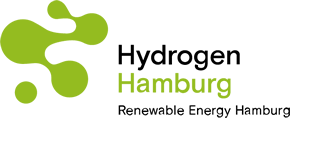Details
Interlocking the puzzle pieces – Interview with Mitsubishi Heavy Industries System integration at the Hamburg Green Hydrogen Hub
Mitsubishi Heavy Industries (MHI) works in a consortium with Shell, Vattenfall and Wärme Hamburg on the project Hamburg Green Hydrogen Hub (HGHH) in Moorburg. As the technical advisor, the company participates in the system integration seector. The manager of project development, Bastian Gerstner-Riewer, explains which factors have to be observed in the planning of the construction of a facility of this size.

Mr Gerstner-Riewer, how did MHI become consortium partner at HGHH and what makes the project attractive for you?
As part of our project development work we looked around to see where there are interesting locations for a technical set-up for a large-scale electrolysis plant. The combination of the special customer structure in Hamburg harbour and our knowledge of the old coal-fired power plant in Moorburg seemed to make it definitively feasible in our eyes to start a hydrogen project there which can begin with a realistic size and can grow with increasing hydrogen requirements. Added to this there was the factor that the steel producer Arcelor Mittal in Hamburg had enquired about a project for hydrogen supply and we were looking for partners with which we could implement an electrolyser project.
Decisive advantages of the Moorburg location are on the one hand that we have the required electrical connection at our disposal and no new cables have to be laid, as they are already available for the power plant and on the other hand the sufficient area available in Moorburg. Simultaneously a broad customer spectrum with different customer profiles allows us to optimise the hydrogen production with fluctuating green electricity. And that is exteremely imteresting for us.
On a project management level the set-up in Hamburg is ideal because all participants in the consortium can bring their expertise and strengths to the table. Partners are collaborating on this project with the same objective: to build an electrolysis system and to produce hydrogen for the decarbonisation of the industry and the logistics and mobility sectors.
What exactly is MHI’s role in the joint project?
We deal with the subject of integration of the electrolysis system in the old power plant. The technology involved in the construction of the system may not be completely new but considering the size the question must be asked how efficiently and safely we can build and which electrolysis technology is best suited to the project.
We also focus on the extent to which the space at the location can be optimally used and where there are still optimisation opportunities e.g. in the use of waste heat. The simultaneous demolition of the power plant presents a technical challenge in the construction.
When building this type of facility, initially approvals have to be attained which then have to be agreed with the authorities. This process requires data on how much space the facility will require as well as e.g. how much waste water will be generated. This is exactly the work which we assume by defining this data and having an external audit conducted. Other subjects we work on are issues concerning the later operation of the electrolyser and the integration in the hydrogen grid for Hamburg’s gas grid.
Has MHI already worked on other (hydrogen) projects from which it can integrate its experience directly into the Hamburg Green Hydrogen Hub?
Our American colleagues in Utah are implementing another project called Advanced Clean Energy Storage (ACES), in which high levels of green electricity is being produced from wind and photovoltaic sources. A 200 megawatt electrolysis system is built there to temporarily store the hydrogen in a salt cavern. Adjacent to this there is a power station equipped with Mitsubishi power gas turbines, which coverts the stored hydrogen into electricity. So basically the project that is planned for Hamburg on a small scale, is built there on a large scale. However the difference is that there electricity is made into gas then back to electricity in the first step, while in Hamburg the hydrogen should be primarily used for decarbonisation in the industry.
It is also a pilot project as are the plans for Hamburg, which brings its own challanges in particular in the securing of cost efficiency. We benefit in this project from our years of experience in the hydrogen sector, which we have been able to expand thanks to the Japanese hydrogen strategy and we integrate our expertise in particular in the area of system integration.
You talked about challenges in pilot projects - have you got certain technical findings which you would take from the Hamburg Green Hydrogen Hub?
We cannot rely on trial-and-error in projects of this size, everything is based on experience and the applicable requirements. Only tested technology can be used.
Building a facility of this size in one piece and efficiently so that it will not be too expensive at a later date and has to be shifted to the hydrogen costs, that is the challenge. The aim is to gain knowledge in standardisation in the favour of cost reduction to be in a position to further extend the electrolysis system in steps.
How would you personally assess the meaning of hydrogen for the industry?
If we want to seriously drive the subject of decarbonisation then hydrogen is an extermely important component. A lot can be electrified but actually not everthing, that’s where hydrogen comes into its own – especially in heavy industry.
For this reason hydrogen and green electricity are the two components for successful decarbonisation in the industry. It is extremely important that the basis is laid down now and then continued at a sustainable level, to ensure that we reach the targets in 2050.



